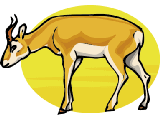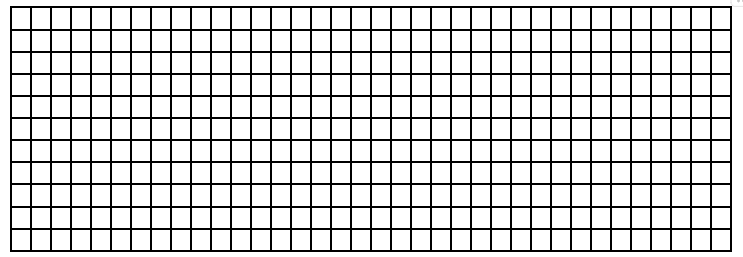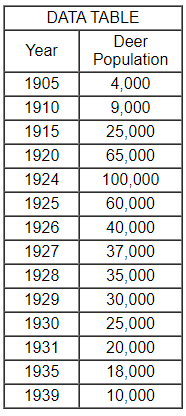The Lesson of the Kaibab
 Introduction: The environment
may be altered by forces within the biotic community, as well as by relationships
between organisms and the physical environment. The carrying capacity
of an ecosystem is the maximum number of organisms that an area can support
on a sustained basis.
Introduction: The environment
may be altered by forces within the biotic community, as well as by relationships
between organisms and the physical environment. The carrying capacity
of an ecosystem is the maximum number of organisms that an area can support
on a sustained basis.
The density of a population may produce such profound changes in the environment that the environment becomes unsuitable for the survival of that species. For instance, overgrazing of land may make the land unable to support the grazing of animals that lived there.
Objectives:
- Graph data on the Kaibab deer population of Arizona from 1905 to 1939
- Determine factors responsible for the changing populations
- Determine the carrying capacity of the Kaibab Plateau
Background
Before 1905, the deer on the Kaibab Plateau were estimated to number about 4000. The average carrying capacity of the range was then estimated to be about 30,000 deer. On November 28th, 1906, President Theodore Roosevelt created the Grand Canyon National Game Preserve to protect the "finest deer herd in America."
Unfortunately, by this time the Kaibab forest area had already been overgrazed by sheep, cattle, and horses. Most of the tall grasses had been eliminated. The first step to protect the deer was to ban all hunting. In addition, in 1907, The Forest Service tried to exterminate the predators of the deer. Between 1907 and 1939, 816 mountain lions, 20 wolves, 7388 coyotes and more than 500 bobcats were killed.
Signs that the deer population was out of control began to appear as early as 1920 - the range was beginning to deteriorate rapidly. The Forest Service reduced the number of livestock grazing permits. By 1923, the deer were reported to be on the verge of starvation and the range conditions were described as "deplorable."
The Kaibab Deer Investigating Committee recommended that all livestock not owned by local residents be removed immediately from the range and that the number of deer be cut in half as quickly as possible. Hunting was reopened, and during the fall of 1924, 675 deer were killed by hunters. However, these deer represented only one-tenth the number of deer that had been born that spring. Over the next two winters, it is estimated that 60,000 deer starved to death.
Today, the Arizona Game Commission carefully manages the Kaibab area with regulations geared to specific local needs. Hunting permits are issued to keep the deer in balance with their range. Predators are protected to help keep herds in balance with food supplies. Tragic winter losses can be checked by keeping the number of deer near the carrying capacity of the range.
DATA
1. Graph the deer population data. Place time on the X axis and "number of deer" on the Y axis

Analysis
1. During 1906 and 1907, what two methods did the Forest Service use to protect the Kaibab deer?
2. Were these methods successful? Use the data from your graph to support your answer.
3. Why do you suppose the population of deer declined in 1925, although the eliminationof predators occurred?
4. Why do you think the deer population size in 1900 was 4,000 when it is estimated that the plateau has a carrying capacity of 30,000?
5. Based on these lessons, suggest what YOU would have done in the following years to manage deer herds.
1915:
1926:
6. It is a criticism of many population ecologists that the pattern of population increase and subsequent crash of the deer population would have occurred even if the bounty had not been placed on the predators. Do you agree or disagree with this statement. Explain your reasoning.
7. What future management plans would you suggest for the Kaibab deer herd?
Other Data Analysis Activities
Analyzing Data – make and interpret graphs, summarize data trends
Graphing Data – Flow Rates – graph the flow rate of liquids in a pipe, simple plot and draw two lines
Graphing Practice – given data sets, such as video games scores and shirt colors, students create line and bar graphs, activity paired with growing sponge animals while students wait on results
Interpreting Graphs and English Usage – simple graph showing tadpoles, this is more of a vocabulary lesson on words used to interpret graphs, such as fluctuate, decline, stabilize…


